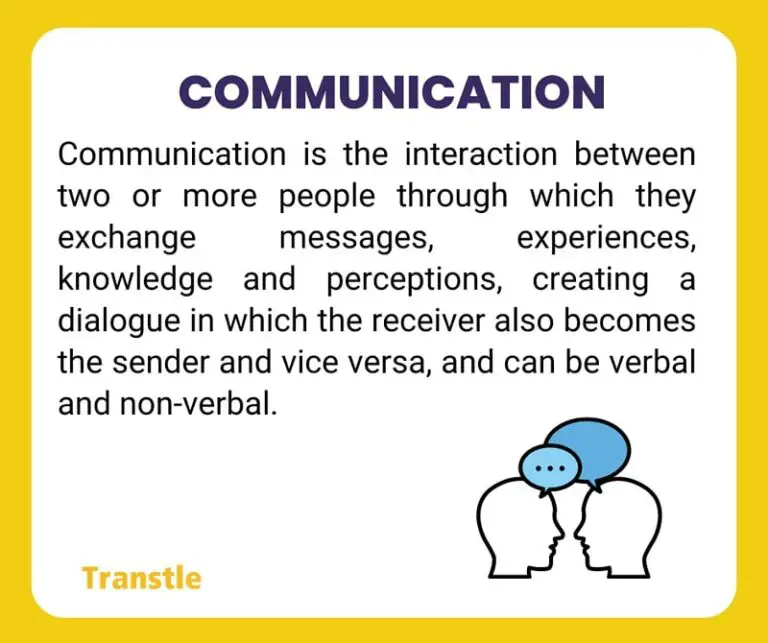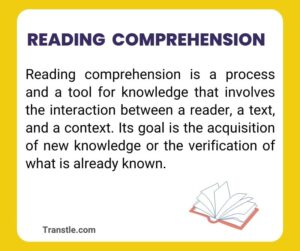Communication: Definition, Functions, Laws and Models

Communication
Communication is a fundamental process in which two or more people interact and exchange messages. The communication process involves a sender who sends a message and a receiver who receives it. In this exchange, they share experiences, knowledge, and perceptions, creating a dialogue in which the receiver also becomes the sender and vice versa.
The word “communication” comes from the Latin “communis,” which means the exchange of experiences and tuning between the sender and the receiver. In addition, it is related to the Latin word “comunicatio,” which comes from the verb “comunicare” and refers to sharing, imparting, and transmitting.
In summary, communication is a two-way process that involves sharing information and experiences between two or more people. It is important to note that communication is a complex process that involves many factors, including context, language, and culture. By understanding the importance of communication and the tools needed to carry it out effectively, we can improve our interpersonal relationships and achieve our goals.
Contents
Communication and information
The terms “communication” and “information” are often confused, but there is a real difference between them.
Information refers to the transmission of a message in a one-way direction, where there is not necessarily any interaction. This message can be of different types, including text, images, and other types of content.
Communication, in contrast, necessitates a two-way interaction between two or more people. During this process, participants exchange messages and respond to each other, fostering a dialogue that facilitates the exchange of information, ideas, and emotions. For example, when a teacher informs his students that there will be no classes tomorrow, it is initially information. However, if the students respond with questions or comments, a dialogue is established and it becomes communication.
| Feature | Communication | Information |
|---|---|---|
| Directionality | Two-way | One-way |
| Interaction | Yes | No |
| Exchange | Ideas, emotions, information | |
| Example | A conversation between two people | A news article |
Functions of communication
Functions of communication are to express, to inform, and to persuade.
- Expressive Function: It focuses on transmitting emotions, feelings, and personal experiences. This function can be observed in everyday situations such as greeting, expressing emotions, or sharing experiences with others.
- Informative Function: It is related to the exchange of information and knowledge. This function can be observed when information is requested or given, ideas are exchanged, or knowledge is shared in different contexts.
- Persuasive Function: It focuses on influencing the opinions, attitudes, or behaviors of others. This function is evident in situations such as making an invitation, attempting to convince someone of something, requesting attention, or negotiating a situation.
Laws and axioms of communication
Communication is a complex process governed by laws and axioms that are fundamental to understanding its functioning. According to Michael Birkenbihl (1981), some of the laws of communication are as follows:
Basic Law No. 1: Truth is not what A says, but what B understands. This law means that the receiver of a message may interpret it differently than the sender, due to their own beliefs, values, resentments, and prejudices. Therefore, the sender is responsible for ensuring that the message is understood correctly through feedback.
Basic Law No. 2: When B misinterprets A’s message, A is responsible. This law relates to the sender’s responsibility to ensure that the message is understood correctly.
In addition to the laws, there are also axioms:
Axiom No. 1: No-communication. Non-communication is not possible, even when a person does not communicate, their lack of action is also considered a form of communication.
Axiom No. 2: Every communication involves both a content aspect and a relationship aspect, with the latter conditioning the former. Communication is influenced by both an objective or rational level and an emotional level that reflects the relationship between the participants. The perception of the message is determined by the interplay of both these levels.
Axiom No. 3: Interpersonal communication processes are symmetrical or complementary. This axiom refers to power or superiority relationships that may exist between interlocutors and how these can affect communication. The differences between interlocutors can generate semantic, cognitive, and contextual barriers.
Cooperative principle
The cooperative principle in communication is the tacit or non-obvious agreement regarding the desire to communicate. When two people communicate there is an unexpressed agreement to establish a communicative interaction and according to the author Grice 1975, the principle is governed by three general rules.
Grice’s maxims
- Maxim of quantity (content length and depth). Make your contribution as informative as the situation requires and don’t exceed.
- Maxim of quality (truth). The contribution has to be true.
- Maxim of relation (relevance). The contribution has to be relevant, the authors say that every communicative act entails an intention from the interlocutors to be relevant the presumption that what the other person says is relevant, therefore, the interpretation of the statements is based what’s considered most relevant to the situation.
Communication models
Communication models have been developed over time to better understand how communication works. These models have been influenced by the work of experts such as Dell Hymes, Erving Goffman, Noam Chomsky, Michael Halliday, and John Searle.
Linear Communication Model
The linear communication model is based on the idea that communication is a linear and unidirectional process, in which a sender sends a message to a receiver through a channel, and the receiver receives and decodes the message without responding.
Limitations of the Linear Communication Model
The model does not account for the complexities of communication, such as noise interference, feedback, and subjective interpretation of the message by the receiver. Despite its limitations, the basic linear model is still used as a tool to teach the basic concepts of communication in education and communication research.
The Communication Competence Model
One of the competence-based models is the expanded linear model, which includes additional competencies, determinations, and restrictions that influence communication. This model can help to identify the obstacles and challenges that can arise in communication and develop strategies to overcome them.
Types of Competences
- Linguistic competence: The ability to produce discourse effectively in a given language.
- Paralinguistic competence: All the gestures, signals, and nonverbal emissions that accompany verbal language.
- Cultural competence and ideological competence: How the message is encoded and decoded through the cultural and ideological perspective of the sender and receiver.
- Restrictions: The psychological and psychoanalytic obstacles that can affect communication.
Textual Linguistics Communication Model
The textual linguistics model considers that communication takes place through texts and in a context.
Types of Context
- Linguistic context: The linguistic expressions that are accessible to the participants through a conversation and are found in the immediate physical and sociocultural environment.
- Sociocultural context: The social and cultural conditions that influence the production, structure, and interpretation of the functions of a conversation.
- Pragmatic context: The knowledge of the conditions and the appropriate mode of use of communication according to the objectives set by the sender and the receiver.
Read next



